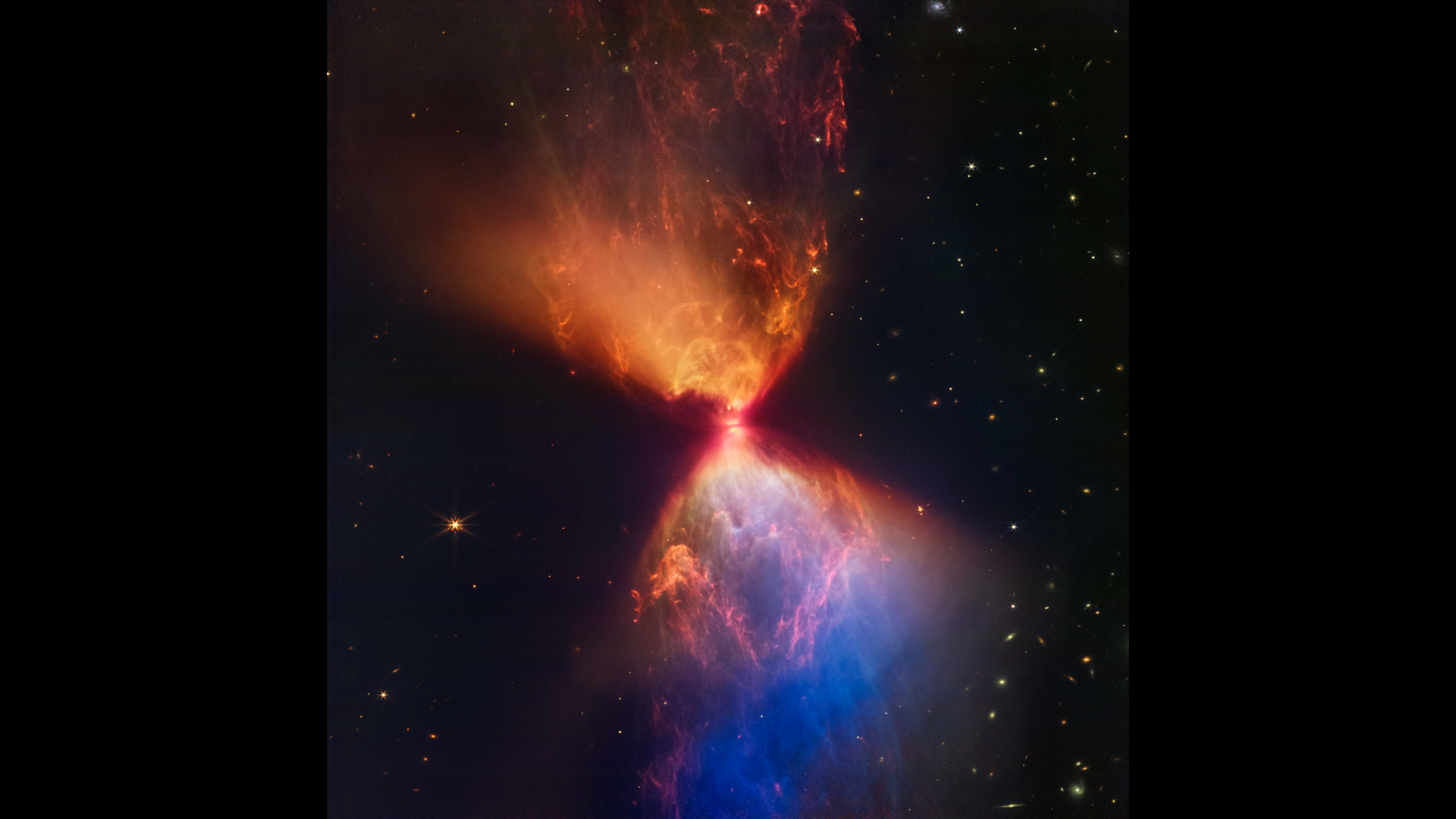Fiery James Webb Space Telescope image shows the early days of star formation
The newest space telescope on the block has spotted a blazing cosmic hourglass filled with vibrant colors and hiding a fledgling star, or protostar, at its heart.
The blazing formation within the Taurus star-forming region and the protostar within it has been hidden to telescopes by a dense, dark cloud of gas and dust known as L1527. The formation is only visible in infrared light thus making it an excellent target for the Near Infrared Camera (NIRCam) aboard the James Webb Space Telescope (Webb or JWST).
Astronomers hope that examining the cosmic hourglass will help illuminate the processes occurring around the protostar, which is itself hidden from view at the neck of the formation. The observations could also help explain how infant stars reach adulthood, according to a statement from the Space Telescope Science Institute in Maryland, which operates the telescope.
Related: Magnificent Pillars of Creation sparkle in new James Webb Space Telescope image
The protostar within L1527 and the cause of these turbulent conditions is only 100,000 years old, a mere infant in cosmic terms. Its young age and infrared brightness make the L1527 star what astronomers call a class 0 protostar, which marks the earliest stage of star formation. Class 0 protostars like this one are still cocooned within the clouds of gas and dust from which they form, and are still some way away from becoming full stars.
Currently, the protostar's shape is predominantly spherical but still unstable, and would look like a small, hot and "puffy" clump of gas with a mass between 40% and 20% of the sun.
While the protostar is hidden, the image reveals a protoplanetary disk of gas and dust around the star, which appears as a dark line across the neck of the hourglass. This structure forms as material is drawn to the center of the hourglass, allowing the protostar to feed off of the disk, which is about the size of the solar system.
Breaking space news, the latest updates on rocket launches, skywatching events and more!
As the infant star gathers mass to grow in size, the material will also compress the star, raising the temperature and pressure in the core enough to kick-start nuclear fusion. Fusion transforms hydrogen in the star's core into helium, generating energy, and the moment marks a major step in the star's development.
An anti-social protostar shaping a lonely nursery
Even as much of the surrounding material is being fed to the protostar, allowing it to gather mass, the JWST image also shows filaments of molecular hydrogen that have been shocked by material blasted out by the central protostar. This turbulence removes gas and dust — the raw material of stars — and thus prevents other stars from being born around the protostar, allowing it to effectively dominate this region of space.
Astronomers know without seeing the protostar that it is present from arguably the most spectacular aspects of the image, the massive hourglass shape itself. As light from the protostar leaks out above and below the protoplanetary disk, it illuminates cavities in the surrounding gas and dust carved out by the growing star.
Outlining these void lobes are blue and orange clouds, with blue representing areas where the dust is thinnest and orange marking where it is at its thickest. Astronomers assigned these colors because the thicker the dust is, the more blue light is trapped, which gives rise to pockets of orange.
Moreover, within the dark disk at the heart of the cosmic hourglass, material is clumping into pockets dense enough to eventually form planets. This means the new view of L1527 is providing a cosmic window through which we can look back, observing what the sun and our planetary system might have looked like during their formative stages over 4.5 billion years ago.
Follow us on Twitter @Spacedotcom or on Facebook.

Robert Lea is a science journalist in the U.K. whose articles have been published in Physics World, New Scientist, Astronomy Magazine, All About Space, Newsweek and ZME Science. He also writes about science communication for Elsevier and the European Journal of Physics. Rob holds a bachelor of science degree in physics and astronomy from the U.K.’s Open University. Follow him on Twitter @sciencef1rst.

